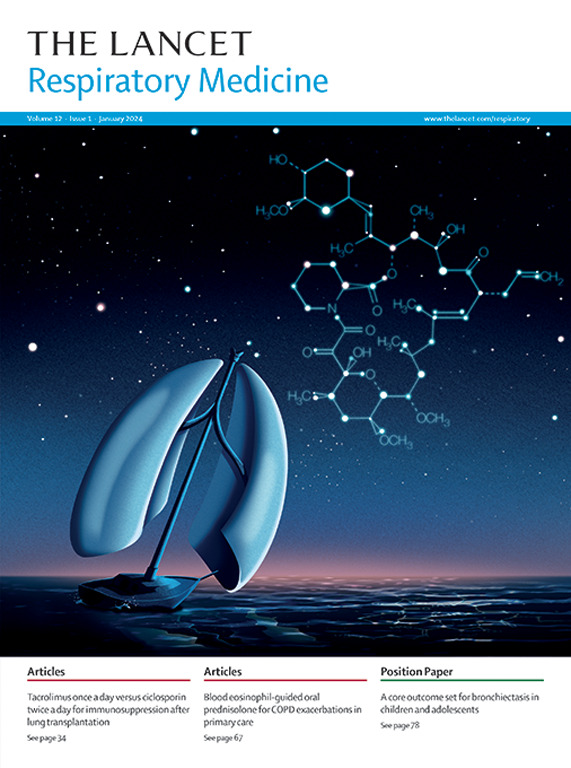嗜酸性粒细胞在哮喘表型中的作用:肇事者还是肇事者?
IF 32.8
1区 医学
Q1 CRITICAL CARE MEDICINE
引用次数: 0
摘要
在《柳叶刀》(The Lancet)发表抗il -5抗体mepolizumab在过敏性哮喘患者中的临床试验25年后,越来越多的证据表明,嗜酸性粒细胞的致病作用在哮喘表型之间存在根本差异。在过敏原驱动型哮喘中,通常始于童年或青春期(即早发性哮喘),血嗜酸性粒细胞计数是可变的,主要取决于过敏原暴露,在过敏原诱导的哮喘症状中仅起次要作用(作为所谓的伙伴)。相比之下,嗜酸性粒细胞持续升高,是哮喘固有(嗜酸性粒细胞)形式的关键驱动因素,通常始于成年期(即成人发病哮喘)。这些数据表明嗜酸性粒细胞增多症不应被视为慢性气道疾病患者的可治疗特征,而只是准确临床诊断的补充。这一证据对哮喘表型的诊断和哮喘的治疗(例如,选择正确的生物制剂)具有重要意义。本文章由计算机程序翻译,如有差异,请以英文原文为准。
Eosinophils in asthma phenotypes: perpetrators or guilty by association?
25 years after publication of a clinical trial in The Lancet on the anti-IL-5 antibody mepolizumab in individuals with allergic asthma, evidence has accumulated that the pathogenetic role of eosinophils is fundamentally different between asthma phenotypes. In the allergen-driven form of asthma, often starting in childhood or during adolescence (ie, early onset asthma), blood eosinophil counts are variable, mainly dependent on allergen exposure, and play only a minor role (as a so-called sidekick) in allergen-induced asthma symptoms. By contrast, eosinophils are persistently elevated and are crucial drivers of the disease in the intrinsic (eosinophilic) form of asthma, which typically starts in adulthood (ie, adult-onset asthma). These data suggest that eosinophilia should not be considered a treatable trait in people with chronic airway diseases, but only a complement to an accurate clinical diagnosis. This evidence has major implications for the diagnosis of asthma phenotypes and the treatment of asthma (eg, choice of the right biologic).
求助全文
通过发布文献求助,成功后即可免费获取论文全文。
去求助
来源期刊

Lancet Respiratory Medicine
RESPIRATORY SYSTEM-RESPIRATORY SYSTEM
CiteScore
87.10
自引率
0.70%
发文量
572
期刊介绍:
The Lancet Respiratory Medicine is a renowned journal specializing in respiratory medicine and critical care. Our publication features original research that aims to advocate for change or shed light on clinical practices in the field. Additionally, we provide informative reviews on various topics related to respiratory medicine and critical care, ensuring a comprehensive coverage of the subject.
The journal covers a wide range of topics including but not limited to asthma, acute respiratory distress syndrome (ARDS), chronic obstructive pulmonary disease (COPD), tobacco control, intensive care medicine, lung cancer, cystic fibrosis, pneumonia, sarcoidosis, sepsis, mesothelioma, sleep medicine, thoracic and reconstructive surgery, tuberculosis, palliative medicine, influenza, pulmonary hypertension, pulmonary vascular disease, and respiratory infections. By encompassing such a broad spectrum of subjects, we strive to address the diverse needs and interests of our readership.
 求助内容:
求助内容: 应助结果提醒方式:
应助结果提醒方式:


